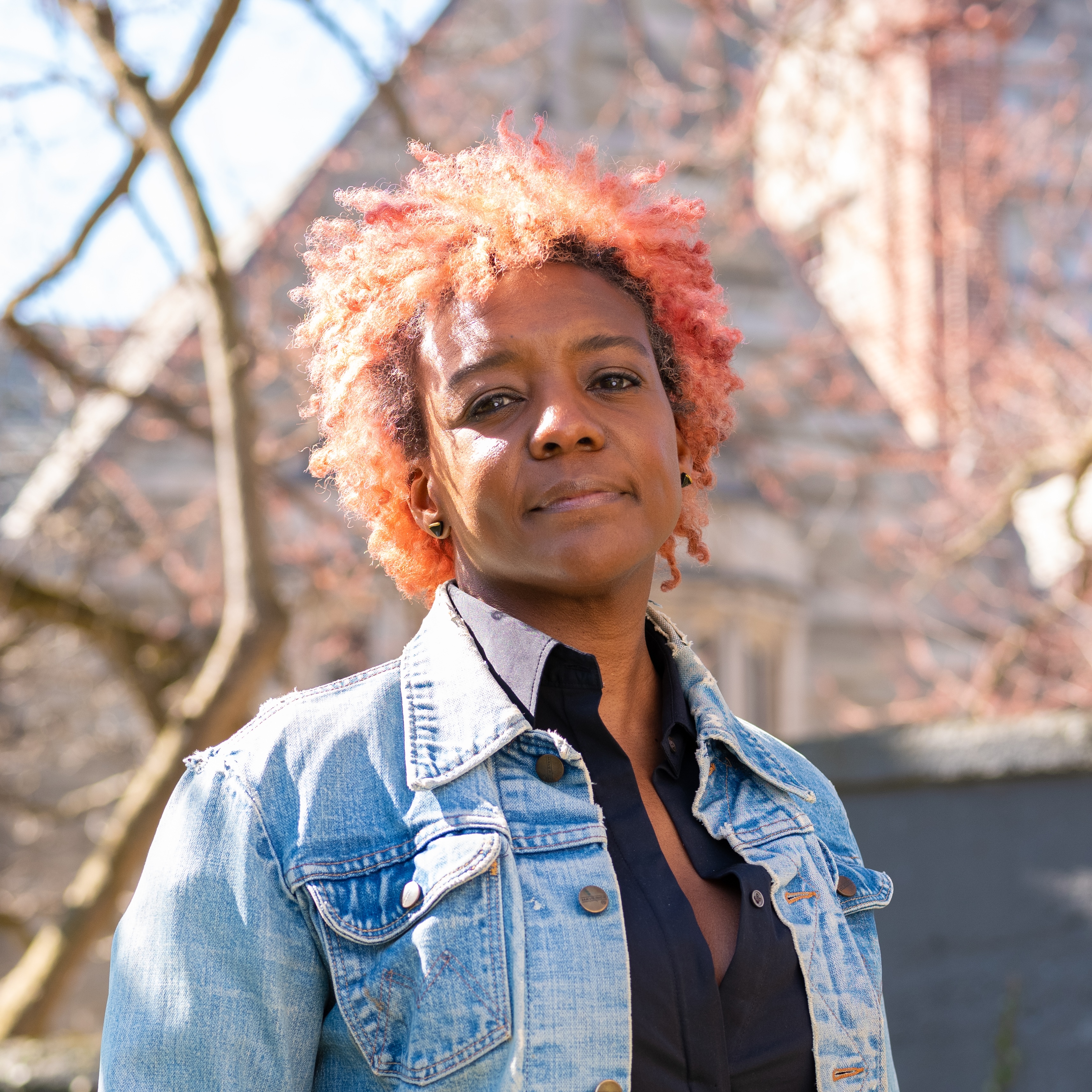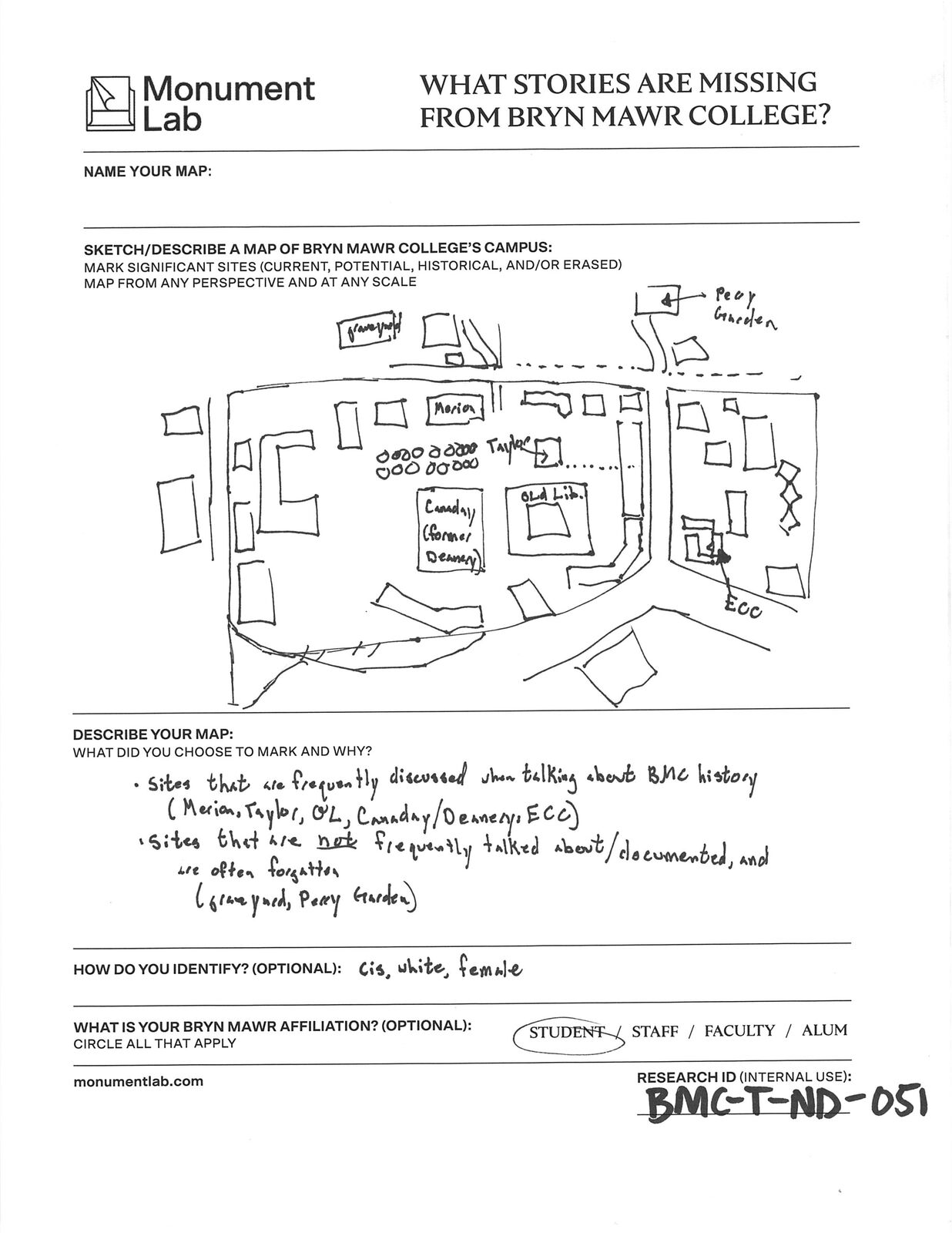Nekisha Durrett’s “Don’t Forget to Remember (Me)” is a commissioned monument at Bryn Mawr College arising from an exploration of exclusionary histories on campus. Durrett’s artwork is the culmination of Bryn Mawr College’s ARCH Project (Art Remediating Campus Histories), a five-year collaboration with students, staff, faculty, and alums, and was produced in partnership with Monument Lab.
“Don’t Forget to Remember (Me)” embeds monumental braided pathways throughout the courtyard of the Cloisters behind the Old Library, comprising thousands of custom clay brick pavers in a square knot formation. Throughout the paths, Durrett included nearly 250 engraved pavers with the names of former Black staff members from approximately 1900-1940 who were employed as live-in domestic servants, maids, porters, and other personal support staff roles at a time when most Black students were systematically denied admission or steered away from attendance based on race. These workers were critical to building and operating the College, particularly in its early decades, but their contributions have been historically unrecognized. The names in the monument were gathered by student researchers and staff from the College’s archives, from sources including time cards, census records, and other primary materials. As a part of the artwork, the engraved names serve as both markers of those individuals who helped build the College and placeholders for a greater community of unknown workers who have labored at and cared for the campus. At night, the pathways are illuminated from within by translucent glass pavers that represent the many workers whose names were lost to the historical record.
As Durrett notes of the artwork, “Don’t Forget to Remember (Me)” evokes “the shape of a knot that cannot be undone, symbolizing interconnectivity, and making visual that Bryn Mawr is reexamining its history to tell all of its stories.”
The ARCH Project was informed by five years of engaged campus research, as well as an open call for artist ideas, focused around the central question, “What stories are missing from Bryn Mawr College”? This vital artwork builds on ongoing grassroots campus and College-supported efforts to reveal and repair harm, reckon and reflect on Bryn Mawr College’s sense of its own history, and offer a path toward reconciliation and greater belonging.
 Nekisha Durrett (Born 1976 in Washington, DC; she/her/hers) is the 2022 Howard University Social Justice Consortium’s (SJC) Artist in Residence Fellow. From large freestanding sculptures to intimate gallery installations, her work uses unexpected materials to make historical connections and connotations that places and materials embody but are overlooked in our day-to-day lives. Whether reimagining pre-Colonial landscapes, bygone Black communities, or family lore, Durrett’s research-driven practice allows viewers to consider what is revealed or concealed when information is filtered across time. Her work is held in the permanent collections of The National Museum of African American History and Culture and The Phillips Collection (Washington, DC, USA).
Nekisha Durrett (Born 1976 in Washington, DC; she/her/hers) is the 2022 Howard University Social Justice Consortium’s (SJC) Artist in Residence Fellow. From large freestanding sculptures to intimate gallery installations, her work uses unexpected materials to make historical connections and connotations that places and materials embody but are overlooked in our day-to-day lives. Whether reimagining pre-Colonial landscapes, bygone Black communities, or family lore, Durrett’s research-driven practice allows viewers to consider what is revealed or concealed when information is filtered across time. Her work is held in the permanent collections of The National Museum of African American History and Culture and The Phillips Collection (Washington, DC, USA).
Follow Nekisha Durrett on Instagram, Facebook, and Twitter or visit her website to learn more about her work.

 During the 2021-2022 academic year, Monument Lab posed a central research and engagement question to the campus to guide the project:
During the 2021-2022 academic year, Monument Lab posed a central research and engagement question to the campus to guide the project:  While the engagement forms were Monument Lab’s primary mode of research collection, our findings were also informed by what the student team saw in the process of collecting research.
While the engagement forms were Monument Lab’s primary mode of research collection, our findings were also informed by what the student team saw in the process of collecting research.